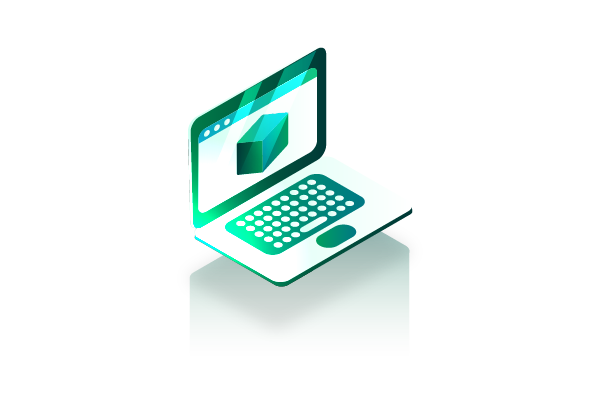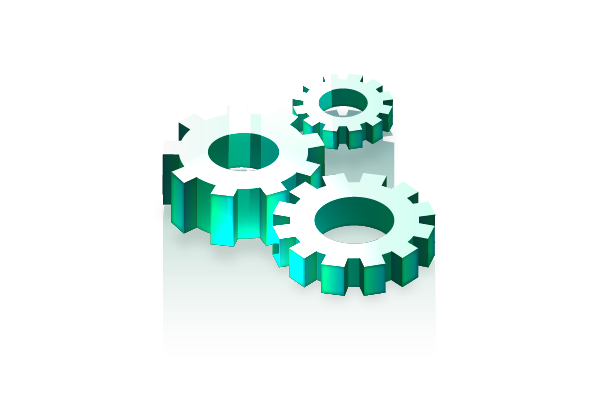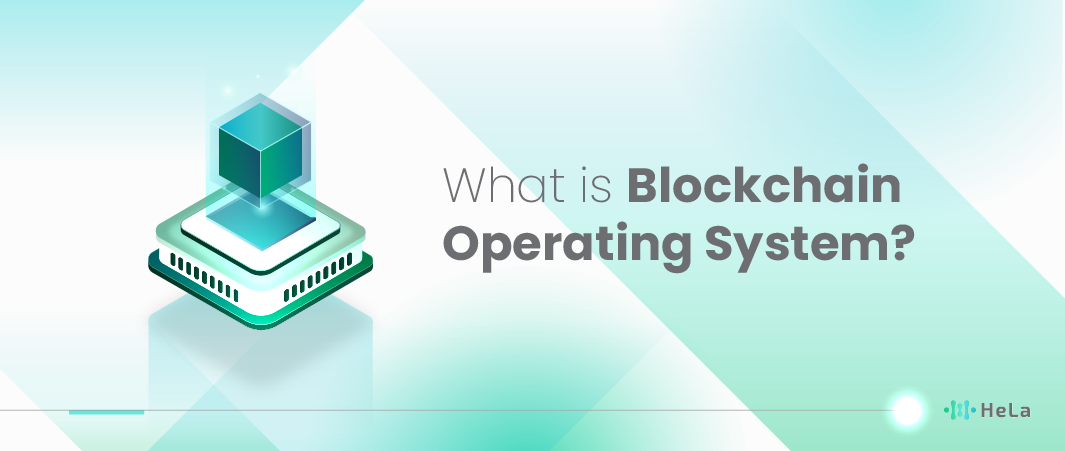In today’s digital world, transparency and security in transactions are paramount. Traditional systems often fall short, leaving room for errors, fraud, and inefficiencies. Enter the blockchain operating system, a groundbreaking technology poised to transform how we conduct transactions. By leveraging the power of blockchain, this operating system offers a transparent, secure, and efficient way to manage transactions, making it a vital tool for businesses and individuals alike.
Blockchain technology, initially known for powering cryptocurrencies like Bitcoin, has far-reaching implications beyond digital currencies. At its core, blockchain is a decentralized ledger that records transactions across multiple computers. This decentralization ensures that no single entity controls the entire network, reducing the risk of fraud and tampering. As blockchain technology evolves, its applications are expanding into various sectors, including finance, supply chain, healthcare, and more.
A blockchain operating system builds on this technology, providing a robust platform for managing transactions. Unlike traditional operating systems that rely on centralized databases, a blockchain operating system uses a distributed ledger to record and verify transactions. This fundamental shift not only enhances transparency but also boosts security, making it an ideal solution for modern transaction management.
Understanding the Basics of Blockchain

Blockchain technology is often misunderstood, yet it is remarkably straightforward at its core. A blockchain is a digital ledger that records transactions in a series of blocks. Each block contains a list of transactions, a timestamp, and a cryptographic hash of the previous block, linking them together in a chain. This structure ensures the integrity and chronological order of the data.
Also Read: Inside HeLa’s internal Scalability and Performance Test
One of the key features of blockchain is its decentralized nature. Traditional databases are typically managed by a single entity, which can be a point of failure. In contrast, a blockchain is maintained by a network of nodes, each holding a copy of the entire ledger. This decentralization makes it highly resistant to fraud and tampering, as altering the data would require compromising a majority of the nodes simultaneously.
Moreover, blockchain uses consensus mechanisms to validate transactions. Popular mechanisms include Proof of Work (PoW) and Proof of Stake (PoS). These mechanisms ensure that all participants in the network agree on the validity of transactions, further enhancing security and trust.
The Role of Blockchain in Transaction Transparency

Blockchain technology, a decentralized digital ledger, has revolutionized the way transactions are recorded and verified. Unlike traditional systems that rely on central authorities, blockchain operates on a network of nodes, each maintaining a copy of the entire ledger. This decentralized nature is what underpins its transparency and security.
Issues with Traditional Transaction Systems
Transparency in transactions is crucial for building trust and accountability. In traditional systems, transaction records are often stored in centralized databases, which can be opaque and susceptible to manipulation. This lack of transparency can lead to disputes, fraud, and a general lack of trust among parties. Furthermore, the centralization of data makes these systems vulnerable to hacking and data breaches.
How Blockchain Enhances Transparency
A blockchain operating system addresses these issues by providing a transparent and immutable record of transactions. Every transaction recorded on the blockchain is visible to all participants in the network. This transparency ensures that all parties have access to the same information, reducing the likelihood of disputes and fostering trust. For example, in supply chain management, blockchain allows all stakeholders to track the movement of goods from origin to destination, ensuring authenticity and reducing the risk of counterfeiting.
Immutability and Security
Additionally, the immutability of blockchain records means that once a transaction is recorded, it cannot be altered or deleted. This feature provides a permanent and tamper-proof record of transactions, making it easier to trace and verify the history of any transaction. For businesses, this can streamline audits and compliance processes, while for consumers, it ensures the authenticity of their transactions. In the financial sector, this immutability helps prevent fraud and enhances the integrity of financial records.
Benefits for Businesses and Consumers
For businesses, blockchain technology offers numerous advantages, including improved efficiency and reduced costs. By automating and securing transaction records, businesses can save time and resources typically spent on manual record-keeping and verification. Additionally, blockchain can enhance regulatory compliance by providing a clear and verifiable audit trail.
For consumers, the transparency and security provided by blockchain technology ensure that their transactions are genuine and protected. This can be particularly beneficial in industries such as real estate, where the verification of property ownership and transaction history is critical.
Blockchain technology is poised to transform transaction transparency across various industries. Its ability to provide a secure, transparent, and immutable record of transactions builds trust among parties and reduces the risk of fraud and disputes. As blockchain continues to evolve, its adoption is likely to increase, bringing greater transparency and efficiency to transaction systems worldwide.
Benefits of a Blockchain Operating System

A Blockchain Operating System (BOS) leverages the decentralized and secure nature of blockchain technology to enhance various aspects of operating system functionality. Here are some key benefits of a Blockchain Operating System:
1. Enhanced Security
- Immutable Data: Once data is recorded on a blockchain, it cannot be altered or deleted, ensuring data integrity.
- Decentralized Architecture: Eliminates a single point of failure, reducing the risk of hacking and unauthorized access.
- Cryptographic Protection: Data is secured using advanced cryptographic techniques, making it highly resistant to tampering and fraud.
2. Improved Transparency
- Public Ledger: All transactions and changes are recorded on a public ledger, which can be audited by anyone, enhancing transparency.
- Traceability: Every action and transaction can be traced back to its origin, providing a clear audit trail.
3. Increased Efficiency
- Smart Contracts: Automated execution of agreements and processes without the need for intermediaries, reducing delays and costs.
- Streamlined Processes: Simplifies complex multi-step processes by automating workflows through predefined rules.
4. Enhanced Data Privacy
- Selective Disclosure: Users can control who sees their data and what portions of their data are visible, enhancing privacy.
- Anonymity: Provides options for anonymity or pseudonymity in transactions, protecting user identities.
5. Better Resource Management
- Distributed Computing: Utilizes the combined power of multiple devices in the network, optimizing resource utilization and reducing costs.
- Energy Efficiency: Many blockchain systems are being designed to be more energy-efficient compared to traditional systems.
6. Trust and Decentralization
- Trustless Environment: Reduces the need for trust between parties as the system’s rules and protocols are enforced by the blockchain.
- Decentralized Governance: Decision-making and control are distributed among network participants, preventing monopolies and enhancing fairness.
7. Enhanced Collaboration
- Interoperability: Facilitates seamless interaction between different blockchain networks and traditional systems.
- Collaborative Platforms: Enables multiple parties to collaborate on a common platform with secure, verifiable interactions.
8. Financial Benefits
- Reduced Costs: Lower transaction fees and elimination of intermediaries lead to significant cost savings.
- Tokenization: Enables the creation of digital assets and tokens, opening new revenue streams and financial models.
9. Accessibility
- Global Reach: Accessible to anyone with an internet connection, enabling participation in the global economy.
- Inclusive: Provides opportunities for underserved and unbanked populations to participate in economic activities.
Use Cases
- Supply Chain Management: Enhances transparency and traceability of goods from production to delivery.
- Healthcare: Secure and private management of patient records and data sharing.
- Finance: Streamlined and secure transactions, fraud prevention, and efficient asset management.
- Government: Transparent and tamper-proof voting systems, efficient public service delivery.
A Blockchain Operating System offers numerous benefits, including enhanced security, transparency, efficiency, data privacy, resource management, trust, collaboration, financial savings, and accessibility. These advantages make BOS a promising technology for various industries and applications.
Applications of Blockchain Operating Systems
Blockchain operating systems (BOS) represent a significant evolution in the field of distributed computing and decentralized technologies. Here are several applications and potential impacts of blockchain operating systems across various industries:
1. Financial Services
Decentralized Finance (DeFi): BOS can support DeFi platforms that offer services such as lending, borrowing, and trading without intermediaries.
Cross-border Payments: They can facilitate instant and low-cost cross-border transactions, reducing reliance on traditional banking systems.
2. Supply Chain Management
Transparency and Traceability: BOS can provide immutable records of the entire supply chain process, enhancing transparency and reducing fraud.
Automated Contracts: Smart contracts can automate various processes, such as payments and inventory management, based on predefined conditions.
3. Healthcare
Secure Data Sharing: Patient data can be securely shared among healthcare providers with patients maintaining control over their information.
Medical Records: Blockchain can ensure that medical records are tamper-proof and accessible only to authorized individuals.
4. Voting Systems
E-Voting: BOS can enable secure and transparent electronic voting systems, reducing the risk of fraud and ensuring the integrity of election results.
Voter Verification: Blockchain can provide a reliable method for verifying voter identities.
5. Digital Identity
Self-sovereign Identity: Individuals can have control over their digital identities without relying on central authorities.
Authentication: Blockchain can offer secure authentication mechanisms for accessing various services.
6. Real Estate
Property Transactions: BOS can streamline the process of buying and selling properties by automating contracts and ensuring secure transfer of ownership.
Title Management: Blockchain can provide a reliable record of property titles, reducing disputes and fraud.
7. Intellectual Property
Rights Management: BOS can manage and protect intellectual property rights by providing a transparent record of ownership and licensing agreements.
Royalty Distribution: Smart contracts can automate royalty payments to creators based on usage and predefined terms.
8. Internet of Things (IoT)
Device Management: BOS can manage and secure communications between IoT devices, ensuring data integrity and privacy.
Data Monetization: IoT data can be securely traded on blockchain platforms, enabling new business models.
9. Gaming
Asset Ownership: Players can own and trade in-game assets securely, with blockchain providing proof of ownership.
Fair Play: Blockchain can ensure that game mechanics are transparent and tamper-proof, enhancing fairness.
10. Energy Sector
Peer-to-Peer Energy Trading: BOS can facilitate direct energy trading between consumers, reducing the need for intermediaries.
Grid Management: Blockchain can improve the efficiency of grid management by providing real-time data and automating processes.
11. Legal Industry
Smart Contracts: Legal agreements can be automated and enforced using smart contracts, reducing the need for intermediaries.
Document Management: Blockchain can ensure the authenticity and integrity of legal documents.
12. Education
Credential Verification: Educational credentials can be securely verified and shared, reducing fraud and simplifying the hiring process.
Learning Records: Blockchain can provide a comprehensive and tamper-proof record of an individual’s learning history.
Blockchain operating systems hold the potential to revolutionize various industries by providing enhanced security, transparency, and efficiency. Their applications extend from financial services to healthcare, supply chain management, and beyond, promising a more decentralized and trustworthy digital landscape.
Challenges and Future of Blockchain Operating Systems
Despite the many benefits, blockchain operating systems face several challenges. One significant challenge is scalability. As the number of transactions increases, so does the size of the blockchain, which can lead to slower processing times and higher storage requirements. Researchers and developers are continuously working on solutions to improve scalability, such as sharding and off-chain transactions.
Another challenge is regulatory uncertainty. Blockchain technology is still relatively new, and regulations are evolving. Businesses must navigate a complex and changing regulatory landscape to ensure compliance. This uncertainty can be a barrier to widespread adoption, but as the technology matures, clearer guidelines are expected to emerge.
Also Read: ERC-4337: Key Components and Potential Impact
Looking to the future, the potential of blockchain operating systems is vast. Advances in technology and increasing adoption across industries will likely drive innovation and new use cases. As more businesses and individuals recognize the benefits of blockchain, its role in transaction management will continue to grow, paving the way for a more transparent and secure digital economy.
Conclusion
In conclusion, a blockchain operating system represents a significant leap forward in transaction management. By leveraging the principles of blockchain technology, it offers unparalleled transparency, security, and efficiency. As traditional systems struggle with fraud, inefficiencies, and lack of trust, blockchain provides a robust alternative that addresses these issues head-on.
The benefits of a blockchain operating system extend across various industries, from finance and supply chain to healthcare. Its decentralized nature ensures that no single entity has control, reducing the risk of fraud and enhancing trust among participants. Moreover, the transparency and immutability of blockchain records provide a clear and tamper-proof history of transactions, simplifying audits and compliance.
While challenges remain, such as scalability and regulatory uncertainty, the future of blockchain operating systems is promising. Continued innovation and growing adoption will likely overcome these hurdles, solidifying blockchain’s role in the digital economy. As we move forward, embracing blockchain technology will be key to unlocking a more transparent, secure, and efficient way of conducting transactions.
Disclaimer: The information provided by HeLa Labs in this article is intended for general informational purposes and does not reflect the company’s opinion. It is not intended as investment advice or recommendations. Readers are strongly advised to conduct their own thorough research and consult with a qualified financial advisor before making any financial decisions.

Joshua Soriano
I am Joshua Soriano, a passionate writer and devoted layer 1 and crypto enthusiast. Armed with a profound grasp of cryptocurrencies, blockchain technology, and layer 1 solutions, I've carved a niche for myself in the crypto community.
- Joshua Soriano#molongui-disabled-link
- Joshua Soriano#molongui-disabled-link
- Joshua Soriano#molongui-disabled-link
- Joshua Soriano#molongui-disabled-link

